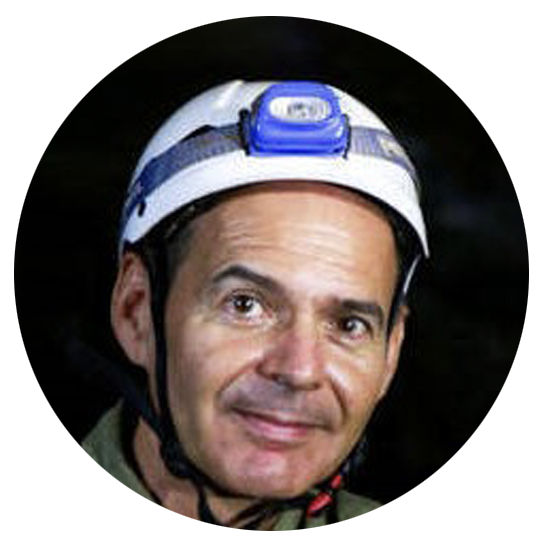
Joao Zilhao
PROFESOR DE INVESTIGACIÓN
ORCID: orcid.org/0000-0001-5937-3061
ID Researcher: L-5670-2014
Scopus: 6603255535
Email: joao.zilhao@gmail.com
Short biography
João Zilhão (born 1957, Lisbon) is a Research Professor at the University of Lisbon (as of September 1st 2022). Prior to the current appointment, he was ICREA Research professor at the University of Barcelona (2011-2022) and Professor of Palaeolithic Archaeology at the University of Bristol (2005-2010). Before 2005, he had taught at the University of Lisbon and, on a temporary basis, at the Universities of Paris I and Bordeaux I. In January 1996, he was appointed by the Portuguese government to set up the Côa Valley Archaeological Park, to co-ordinate the scientific research carried out to establish the chronology of the valley’s Palaeolithic rock art, and to prepare the nomination of the site for World Heritage status (eventual listing date, December 1998). Between May 1997 and May 2002, he created and directed the Instituto Português de Arqueologia (IPA), a department of the Ministry of Culture for the supervision of archaeological activity in the country. In 1998, he directed the salvage excavation of the Early Upper Paleolithic child burial of Lagar Velho (Portugal) and, in 2004-2005, the archaeological investigation component of the research carried out at the Peştera cu Oase (Romania), site of Europe’s earliest modern humans. He was the Conference Organizer for the year 2000 Annual Meeting of the European Association of Archaeologists, held in Lisbon, and he was a member of its Executive Board between 2003 and 2006. In 2003, he was the recipient of a Humboldt Foundation Research Award (host institution: University of Cologne) in recognition of “past achievements in teaching and research.” In 2005, he was the recipient of the London Prehistoric Society’s Europa Prize, in recognition of his “significant and enduring contribution to the study of European prehistory.” In 2012, his research profile was published in “Science.”
Research interests
The Middle-to-Upper Paleolithic transition has been the focus of my research for the last 20 years, leading to fieldwork at several sites: (a) the Lagar Velho rock-shelter (Portugal) and its burial of an early modern human child with diagnostic Neandertal features (evidence for interbreeding at the time of Neandertal/modern contact); (b) the Almonda karst system (Portugal), whose archeology spans half-a-million years and includes such important fossils as the 400,000 year-old Aroeira 3 cranium; (c) the Pestera cu Oase (Romania), site of Europe’s oldest modern humans; (d) Cueva Antón and Cueva de los Aviones (Murcia, Spain), with the earliest known use of personal ornaments, 115,000 years ago; (e) several caves in Iberia, France and Italy where U-Th dating of associated speleothems showed rock art to be >65,000 years old. These early artists were Neandertals, whose behavioral modernity and late persistence to the south of the Ebro drainage remain my main areas of interest.
Selected publications
- PITARCH MARTÍ, A.; ZILHÃO, J.; d’ERRICO, F.; CANTALEJO-DUARTE, P.; DOMÍNGUEZ-BELLA, S.; FULLOLA, J. M.; WENIGER, G. C.: RAMOS-MUÑOZ, J. – The symbolic role of the underground world among Middle Paleolithic Neanderthals. «Proceedings of the National Academy of Sciences», 118 (33), 2021, p. e2021495118 (https://doi.org/10.1073/pnas.2021495118).
- ZILHÃO, J. – The late persistence of the Middle Palaeolithic and Neandertals in Iberia: A review of the evidence for and against the “Ebro Frontier” model. «Quaternary Science Reviews», 270, 2021, p. 107098 (https://doi.org/10.1016/j.quascirev.2021.107098).
- ZILHÃO, J.; ANGELUCCI, D. E.; ARNOLD, L. J. d’ERRICO, F.; DAYET, L.; DEMURO, M.; DESCHAMPS, M.; FEWLASS, H.; GOMES, L.; LINSCOTT, B.; MATIAS, H.; PIKE, A. W. G.; STEIER, P.; TALAMO, S.; WILD, E. M. – Revisiting the Middle and Upper Palaeolithic archaeology of Gruta do Caldeirão (Tomar, Portugal). «PLoS One», 16(10), 2021, e0259089 (https://doi.org/10.1371/journal.pone.0259089).
- ZILHÃO, J.; ANGELUCCI, D. E.; Le BOURDONNEC, F.-X.; LUCENA, A.; MARTÍN-LERMA, I.; MARTÍNEZ, S.; MATIAS, H.; VILLAVERDE, V.; ZAPATA, J. Obsidian in the Upper Palaeolithic of Iberia. «Antiquity», 95, 2021, p. 865-884 (https://doi.org/10.15184/aqy.2021.85).
- ZILHÃO, J.; ANGELUCCI, D. E.; IGREJA, M. A.; ARNOLD, L. J.; BADAL, E.; CALLAPEZ, P.; CARDOSO, J. L.; D’ERRICO, F.; DAURA, J.; DEMURO, M.; DESCHAMPS, M.; DUPONT, C.; GABRIEL, S.; HOFFMANN, D. L.; LEGOINHA, P.; MATIAS, H.; SOARES, A. M. M.; NABAIS, M.; PORTELA, P.; QUEFFELEC, A.; RODRIGUES, F.; SOUTO, P. – Last Interglacial Iberian Neandertals as fisher-hunter-gatherers. «Science», 367, 2020, eaaz7943 (http://science.sciencemag.org/content/367/6485/eaaz7943).